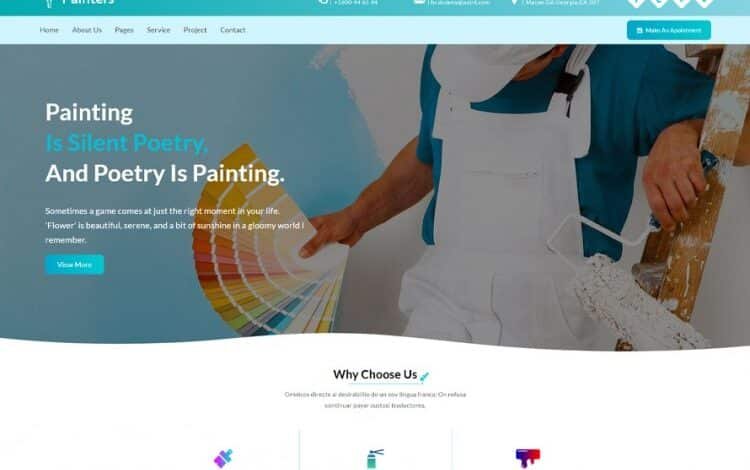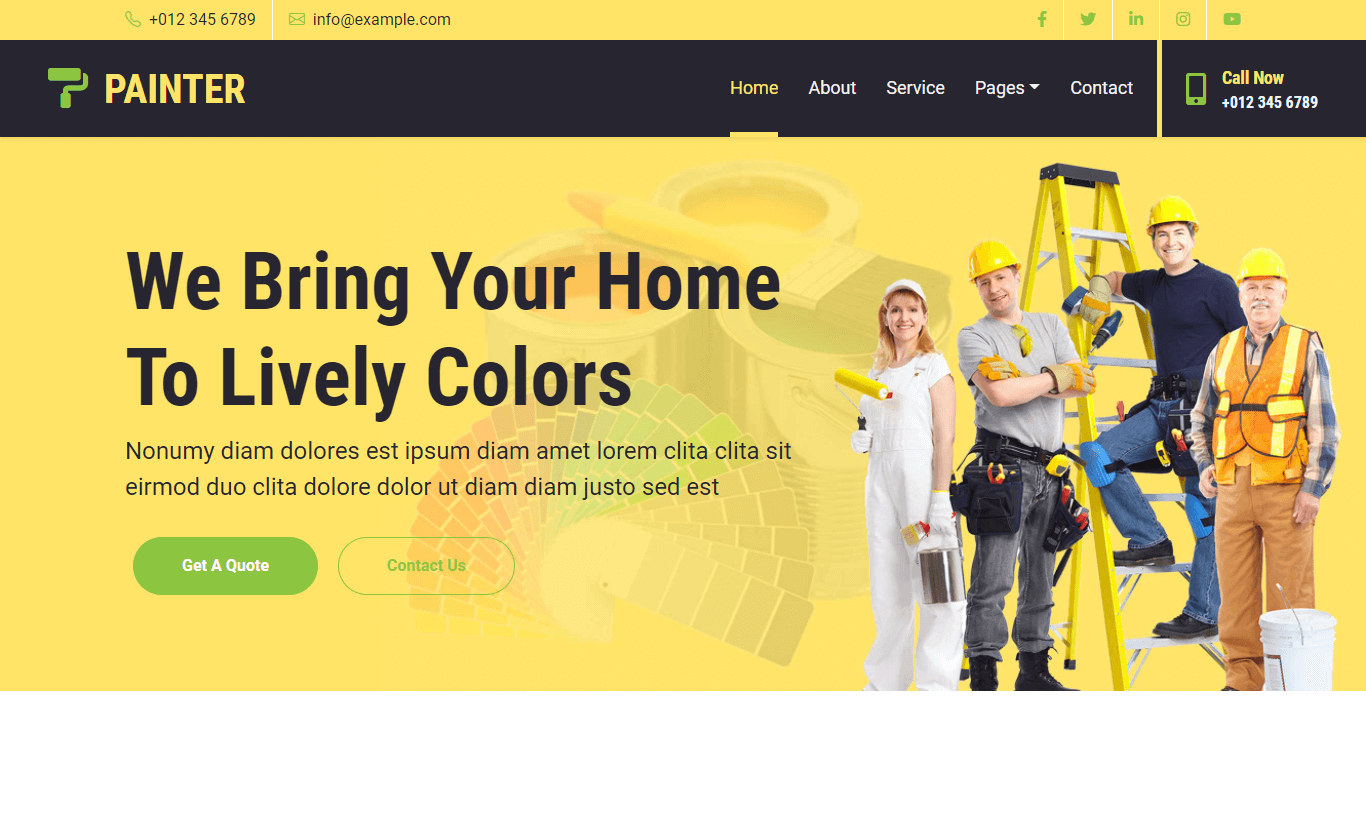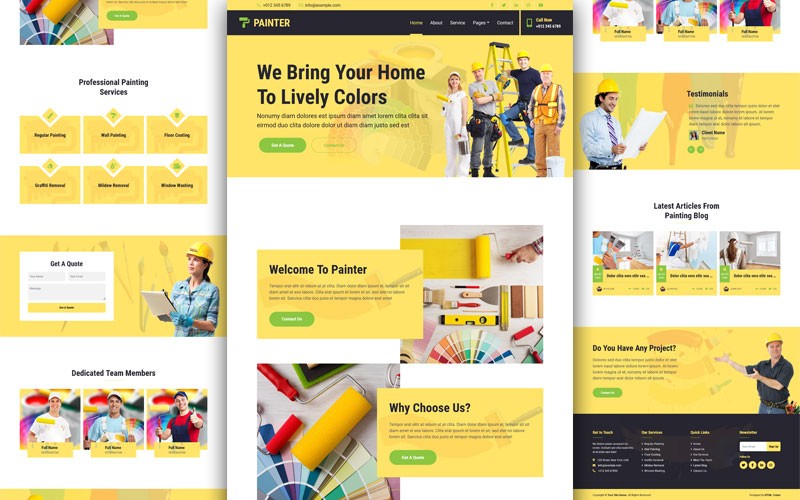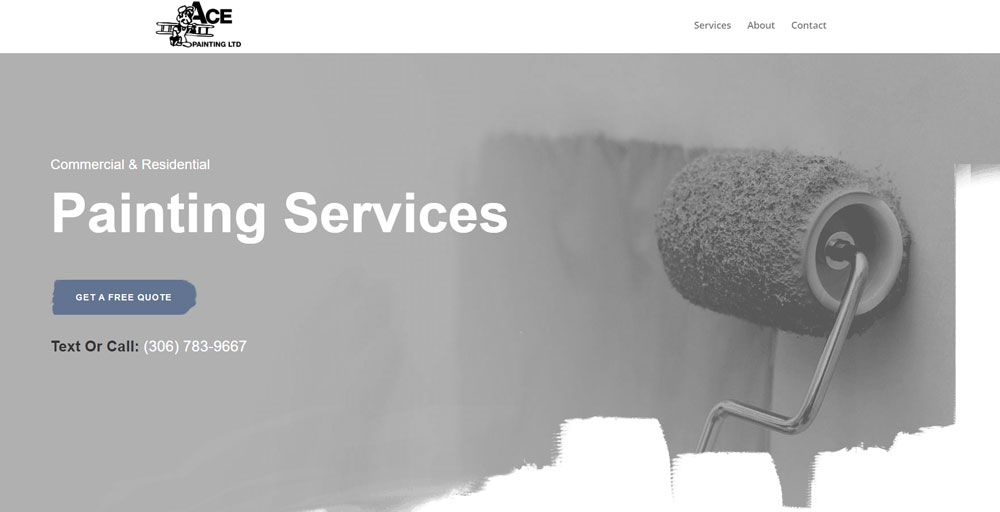Painting Website: Transform Your Art Portfolio Online

Painting Website Welcome to the world of online art! Painting websites offer endless inspiration.
Imagine having a virtual gallery at your fingertips. These platforms showcase stunning artwork from artists around the globe. They provide a space for artists to share their masterpieces and connect with art lovers. A painting website is more than just a collection of images.
It is a hub of creativity and expression. Artists can display their portfolios, sell their work, and engage with a community. Art enthusiasts can explore diverse styles, discover new artists, and even purchase original pieces. Whether you are an artist or an admirer, a painting website brings the beauty of art closer to you. Dive in and start your artistic journey today!
 Credit: avp.prodosgames.com
Credit: avp.prodosgames.comIntroduction To Painting Websites
Creating a website for your paintings can change your art career. The digital world offers many opportunities. A website helps you show your art to the world. It is your online gallery. The introduction to painting websites is a key step for any artist. Your art can reach people across the globe. It can attract buyers, galleries, and art lovers.
Importance Of An Online Portfolio
Your online portfolio is your digital business card. It shows your work in the best light. Potential buyers can see your art anytime, anywhere. They can learn about you and your style. This is crucial for building your brand. It makes you look professional.
An online portfolio allows you to control your image. You can choose the best photos of your work. You can write about your inspirations. You can update it regularly. This keeps your audience engaged. It shows them your latest work.
Benefits For Artists
A painting website offers many benefits for artists. Here are some key ones:
- Global Reach: Your art can be seen by people all over the world.
- Professional Image: A well-designed website makes you look professional.
- Easy Updates: You can easily add new works and news.
- Direct Sales: You can sell your art directly from your site.
These benefits help you grow your art career. They make it easier for people to find and buy your work.
| Benefit | Explanation |
|---|---|
| Global Reach | Your art can be seen by anyone, anywhere. |
| Professional Image | A well-designed site makes you look professional. |
| Easy Updates | Add new works and news with ease. |
| Direct Sales | Sell your art directly from your website. |
Building a painting website is a smart move. It offers many advantages. It can help you grow and succeed as an artist.

Credit: htmlcodex.com
Choosing The Right Platform
Choosing the right platform for your painting website is crucial. The platform you select impacts your site’s design, functionality, and user experience. With numerous options available, making the right choice can be challenging. This section will help you understand the popular platforms and compare their features.
Popular Platforms
Several platforms can host your painting website. WordPress, Wix, and Squarespace are among the most popular. Each offers unique features and benefits. WordPress is a versatile option. It supports various themes and plugins. Wix is user-friendly and ideal for beginners. Squarespace provides elegant templates and integrated tools.
Comparing Features
WordPress offers extensive customization. It has thousands of themes and plugins. You can create a unique website tailored to your needs. Wix is easy to use. It has a drag-and-drop interface. This makes it simple to build a website without coding. Squarespace excels in design. It offers beautiful, professional templates. These templates are perfect for showcasing art.
WordPress requires some technical knowledge. It might not be suitable for everyone. Wix is perfect for those with little technical skills. You can build a website quickly and easily. Squarespace offers a balance. It combines ease of use with stunning designs. Choose the platform that best fits your needs and skills.
Designing Your Website
Creating a stunning website for your painting business is crucial. The design should reflect your style and attract potential clients. Let’s explore how to design your painting website effectively.
Selecting A Theme
Choosing the right theme is essential. Your theme sets the tone for your website. Look for themes that are visually appealing and easy to navigate.
- Ensure the theme is responsive.
- Select a theme with customizable options.
- Pick a theme that loads quickly.
A responsive theme ensures your site looks good on all devices. Customizable options allow you to tailor the theme to your brand. Fast loading times keep visitors engaged.
Customizing The Layout
Once you have selected a theme, it’s time to customize the layout. This step helps to make your website unique.
- Arrange elements logically.
- Use white space effectively.
- Highlight important sections.
Organize your content in a way that is easy to follow. White space improves readability and makes your site look clean. Highlighting key areas draws attention to important information.
Consider using tables to present data clearly:
| Element | Purpose |
|---|---|
| Header | Showcase your brand |
| Menu | Navigate the site |
| Footer | Provide contact info |
Headers should display your logo and tagline. Menus help visitors find their way around. Footers are great for contact details and social media links.
Showcasing Your Artwork
Creating a painting website is an exciting way to share your art. Your website can be a digital gallery for your work. It helps people see and appreciate your talent. To make your website effective, you need to showcase your artwork well. Let’s explore how to do that.
Creating Galleries
Galleries help organize your artwork. They make it easy for visitors to browse. Create different galleries for different styles or themes. For example, you can have a gallery for landscapes and another for portraits. This way, visitors can find what they like quickly. Use high-quality images to display your artwork. Make sure the images are clear and detailed.
Highlighting Key Pieces
Highlighting key pieces can grab attention. Choose a few standout artworks to feature. Place them on your homepage or in a special section. This can intrigue visitors and encourage them to explore more. Write a short description for each key piece. Explain what inspired you or what the artwork represents. This adds a personal touch and makes the artwork more engaging.
Optimizing For Mobile Devices
Optimizing your painting website for mobile devices is crucial. Most people use their phones to browse the web. A mobile-friendly website ensures a better user experience. It also improves your search engine ranking. Let’s explore some key aspects of mobile optimization.
Responsive Design
Responsive design is essential. It makes your website look good on any device. The layout adjusts automatically to fit the screen size. This means your site is user-friendly on both phones and tablets. A responsive design also helps your site load faster. Faster load times lead to higher user satisfaction.
Testing On Different Devices
Testing your website on different devices is important. You need to ensure it works well on various screen sizes. Use tools like Google’s Mobile-Friendly Test. This tool helps you identify issues. Fixing these issues ensures a smooth experience for all users. Regular testing keeps your site up-to-date.
Incorporating E-commerce
Adding e-commerce to your painting website can attract more customers. It allows visitors to buy your art online. This section explores how to set up an online store and choose payment gateway options.
Setting Up An Online Store
First, choose a platform. WordPress, Shopify, and Wix are popular choices. They offer easy setups and various templates. Ensure your chosen platform supports e-commerce features.
| Platform | Features |
|---|---|
| WordPress | Customizable, SEO-friendly, requires plugins |
| Shopify | All-in-one, easy to use, monthly fees |
| Wix | User-friendly, drag-and-drop, limited scalability |
Next, upload your artwork. Use high-quality images. Write clear descriptions. Highlight the size, medium, and price. Creating categories helps customers find what they want. For example:
- Abstract Paintings
- Landscape Paintings
- Portraits
Finally, test your store. Ensure all links work. Check the layout on mobile devices. A seamless experience keeps customers happy.
Payment Gateway Options
Customers need a way to pay. Choose a payment gateway that suits your needs. Common options include:
- PayPal: Widely used, easy to set up, charges fees per transaction.
- Stripe: Supports credit cards, user-friendly, competitive fees.
- Square: Ideal for small businesses, integrates with other tools, transparent fees.
Consider the following factors when choosing a gateway:
- Transaction fees
- Supported currencies
- Integration with your platform
- Customer support
Secure payment options build trust. Display security badges on your site. Make sure your customers feel safe when they buy your art.
Promoting Your Website
Promoting your painting website is crucial. It helps attract visitors and potential clients. Use several strategies to boost visibility and engagement. Here are some effective methods to consider.
Social Media Integration
Social media platforms are powerful tools for promotion. Integrate them into your website to reach a wider audience.
- Share Your Artwork: Post your paintings regularly. Use high-quality images and engaging captions.
- Connect with Followers: Respond to comments and messages. Build a community around your art.
- Use Social Media Buttons: Add buttons to your website. Make it easy for visitors to share your content.
Seo Best Practices
Search engine optimization (SEO) improves your website’s visibility on search engines. Follow these best practices to enhance your SEO.
| Practice | Details |
|---|---|
| Keywords | Use relevant keywords in your content. Focus on terms related to painting and art. |
| Meta Descriptions | Write clear meta descriptions for each page. Include important keywords. |
| Alt Text for Images | Describe your images with alt text. This helps search engines understand your content. |
| Internal Linking | Link to other pages on your website. Improve navigation and keep visitors engaged longer. |
Implementing these practices can significantly boost your website’s search engine ranking. This leads to more organic traffic and potential clients.
Maintaining And Updating
Keeping a painting website fresh and efficient is crucial. Regular maintenance ensures visitors have a seamless experience. Updates improve performance and attract more visitors. Let’s explore the key aspects of maintaining and updating a painting website.
Regular Content Updates
Fresh content keeps your painting website relevant. Add new artwork regularly. Blog posts about painting techniques, art exhibitions, and artist features are engaging. Ensure all images are high-quality and optimized for fast loading.
Use an editorial calendar to schedule updates. This keeps your content consistent. Update your portfolio with new projects. Share behind-the-scenes stories of your painting process. This gives a personal touch and attracts more visitors.
Monitoring Website Performance
Monitor your website’s performance to ensure everything runs smoothly. Use tools like Google Analytics. Track metrics such as page load speed, bounce rate, and user engagement. These insights help you make informed decisions.
Regularly check for broken links and fix them. Ensure all plugins and themes are up-to-date. An efficient website improves user experience and boosts search engine rankings. Below is a simple table to help you monitor key performance indicators (KPIs):
| KPI | Ideal Range | Action if Out of Range |
|---|---|---|
| Page Load Speed | Under 3 seconds | Optimize images, Minimize HTTP requests |
| Bounce Rate | Below 40% | Improve content, Enhance user experience |
| User Engagement | Above 50% | Increase interactive content, Add calls-to-action |
Ensuring your painting website is up-to-date and performing well is essential. It attracts visitors and keeps them engaged. Follow these steps to maintain a successful online presence.
Success Stories
Understanding the journey and achievements of various artists can be inspiring. In this section, we share success stories of artists who have used our painting website. These stories highlight their paths, challenges, and triumphs. Read on to discover their incredible journeys.
Artist Case Studies
Meet John Doe, an emerging artist who struggled to find an audience. After joining our painting website, he showcased his work to a global audience. Within months, John saw a significant increase in followers and sales. He attributes his success to the platform’s user-friendly interface and extensive reach.
Another inspiring story is that of Jane Smith, a seasoned artist. Jane wanted to expand her online presence. By leveraging the tools and features of our painting website, she managed to double her online sales. Jane’s case study is a testament to the power of the right platform in reaching new heights.
Lessons Learned
From the above stories, several key lessons emerge. Firstly, having a dedicated online platform significantly boosts visibility. Artists like John and Jane benefited from the extensive reach of our website.
Secondly, consistency in showcasing art is crucial. Regular updates and engaging with the audience can lead to increased followers and sales. Both John and Jane maintained a consistent presence on their profiles, leading to their success.
Finally, leveraging the tools and features of the platform can provide a competitive edge. Utilizing resources such as analytics, promotional tools, and community support can make a big difference in an artist’s journey.
These stories are just a glimpse into the potential of our painting website. Stay tuned for more inspiring tales and practical insights.

Credit: muffingroup.com
Frequently Asked Questions
How Do I Choose Paint Colors?
Start by considering the room’s purpose and natural light. Test samples on your walls. Research color psychology to find suitable shades.
What Are The Best Tools For Painting?
Use high-quality brushes, rollers, painter’s tape, and drop cloths. Invest in a paint tray and an extension pole for ceilings.
How Do I Prepare Walls For Painting?
Clean the walls to remove dirt and grease. Fill holes and cracks with spackle. Sand the surfaces for a smooth finish.
What Type Of Paint Should I Use?
Choose paint based on the room’s use. For high-traffic areas, use durable, washable paints. For ceilings, use flat or matte finishes.
Conclusion
A well-designed painting website can attract more visitors and clients. It showcases your skills and portfolio effectively. Easy navigation keeps users engaged. Regular updates with fresh content help with search engine rankings. High-quality images make a strong impression. Remember, a good website reflects your professionalism.
So, invest time and effort in creating a user-friendly, visually appealing site. Happy painting and good luck with your online presence!




